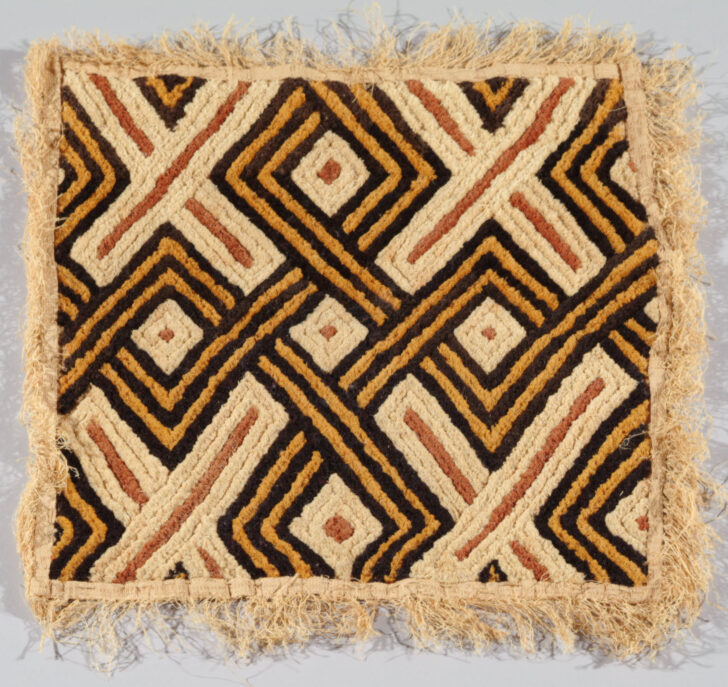Raffia Textile Panel
Kuba

Description
Embroidered plush textiles are produced exclusively by royal Kuba women, and are worn, wrapped around the waist and secured with a belt, only by upper class women and men. People of lower classes may wear textiles in the same manner, but do not wear embroidered cloths. The base cloth, made from raffia (fibers from the raffia palm tree,) is normally woven by men, but all of the decorative work is done by women. The textiles are generally covered with geometric patterns, similar to patterns found on Kuba basket work, woodwork, sculpture, and female body scarifications. Patterns may be given names, but the same pattern will likely be given a different name by different people. There are no universal meanings attached to these motifs. The textiles are often called "velvets" because of their plush texture. At one time, textiles like this were made throughout much of central Africa, but today the Kuba are the only people continuing the practice.
Subject Matter:
The Kuba peoples are renowned for their elaborate, geometrical surface designs, such as applied to this cloth. Also referred to as cut pile, raffia cloth, Shoowa textile or Kasai velvet (Velours du Kaisai), Kuba cloth is often made from barkcloth: a felt fabric, typically not associated with being a textile because it is not woven. Their plush “velvet” texture is achieved through the cut pile technique, where a sharp knife is used to gently clip off the tufts of the palm thread.
In the 19th century, decorated raffia cloth was used as a marker of prestige, as currency, to pay tribute, settle legal disputes, and in public displays such as the funerals of high-ranking titleholders. Additionally, they were often used as initiation objects during ceremonial rites of passage. Though barkcloth is the typical fabric, more recently industrial cloth has been used as a replacement.
The textiles are generally covered with geometric patterns, similar to patterns found on Kuba basketry, woodwork, sculpture, and female body scarifications. Patterns may be given names, but the same pattern will likely be given a different name by different people.
The diamond pattern in this cloth is created through a repetitive crossing and interlocking of lines. A double crossing can possibly be considered a reference to Woot, the mythical founder of the Kuba, whose mother invented mat weaving.
References:
Monni Adams, Kuba Embroidered Cloth, African Arts, 1978
Daniel Biebuyck, The Arts of Zaire, 1985
Georges Meurant, African Textiles from the Kingdom of Kuba, 1986
Roy Sieber, African Textiles and Decorative Arts, 1972
Physical Description:
Square panel with cream color fringed edges. The design consists of black and yellow interlocking lines that form a diamond pattern, in addition to intersecting cream bands with burnt sienna colored lines that form X-shaped patterns throughout the panel.
Usage Rights:
If you are interested in using an image for a publication, please visit https://umma.umich.edu/request-image/ for more information and to fill out the online Image Rights and Reproductions Request Form.